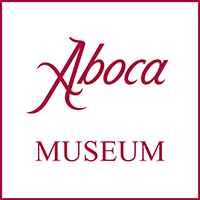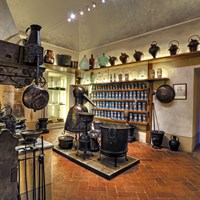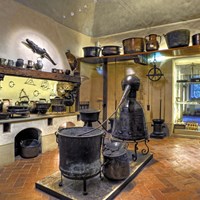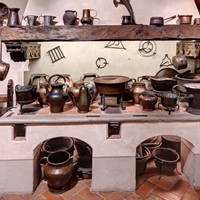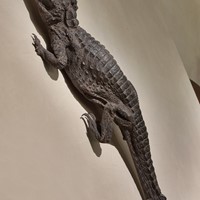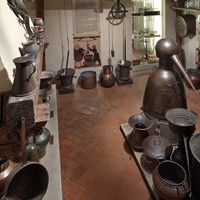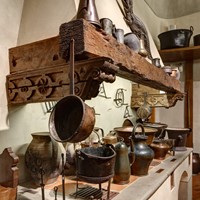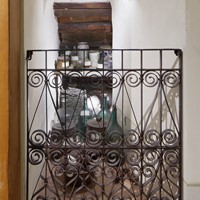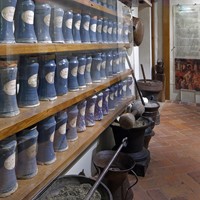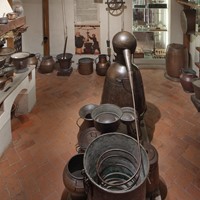The Ancient Apothecary Shop
Here we find a reconstructed 17th century herb workshop
The visitor is catapulted back in time. In the 17th century, inside the apothecary’s laboratory, the visitor imagines the protagonists of this place come to life: the herb collectors, the “pestatore” (spice grinders), the apothecary, the doctor, the sick and the attendant responsible for extracting the “fifth essence”.
The room is furnished with ad hoc tools such as stills, distillers and ovens, as well as locally gathered herbs and imported spices.
In a hidden niche, you can see the res pretiosae, the most expensive and difficult to find products.
High above the static oven, an embalmed crocodile represents vegetal fertility, a symbol of good fortune in the work of the apothecary and the emblem of journeys crossed to distant lands in search of precious ingredients.
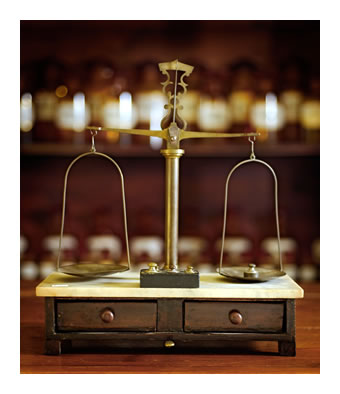
In the beginning of the human been's existence curative herbs were ingested directly or prepared with extremely simple methods, like crushing or maceration into water, milk, wine, vinegar, animals or vegetables fat. The use of fire and metal tools permitted an ulterior evolutionary stage for the extraction processes improvement.
The discovery of the alcoholic distillation, around the Xth century a.C., gave the possibility to transform herbs in derives more and more complex and developed. The research of "excellent" drug was however a continuous worry that has carried on in the course of the centuries to place side by side the use of herbs with many others with mineral and animal origin prepares, not excluded excrements.
Spagirici prepares are a classic example. Alchemy development, with the creation of laboratories opportunely equips, improved many of the extractive techniques, even if the purposes of this different science often were different, like the case of the exasperated research of the philosofal stone.
